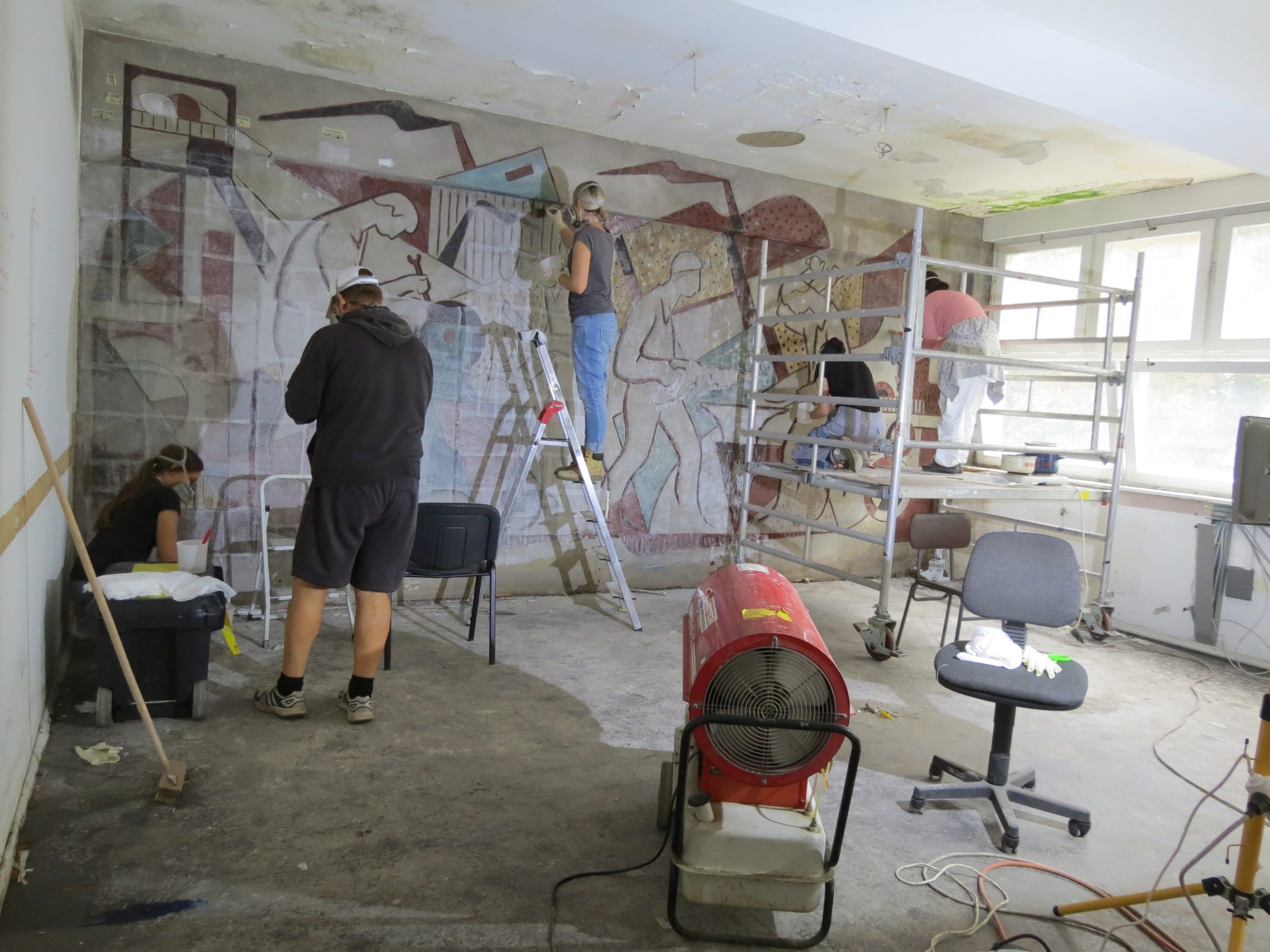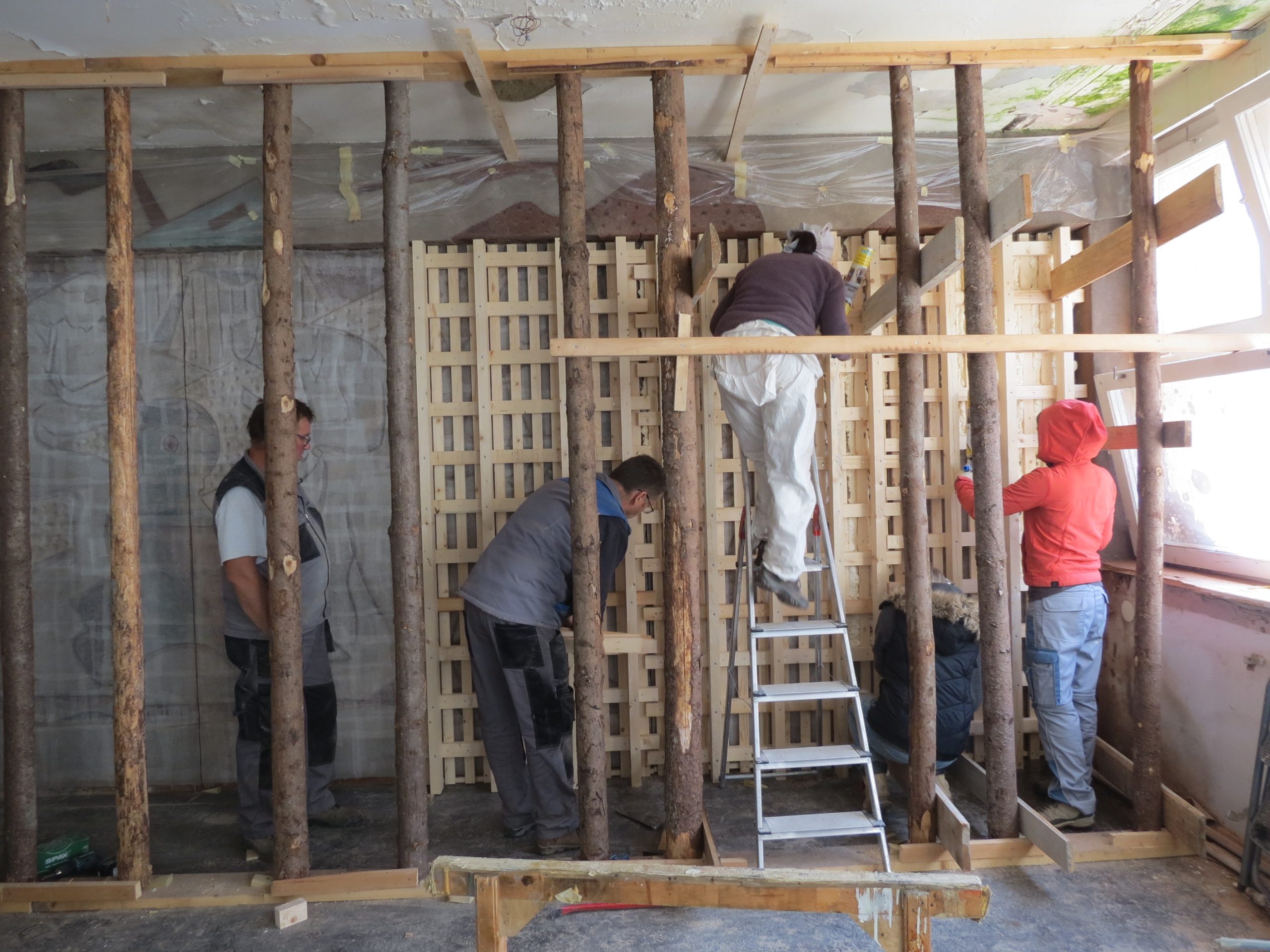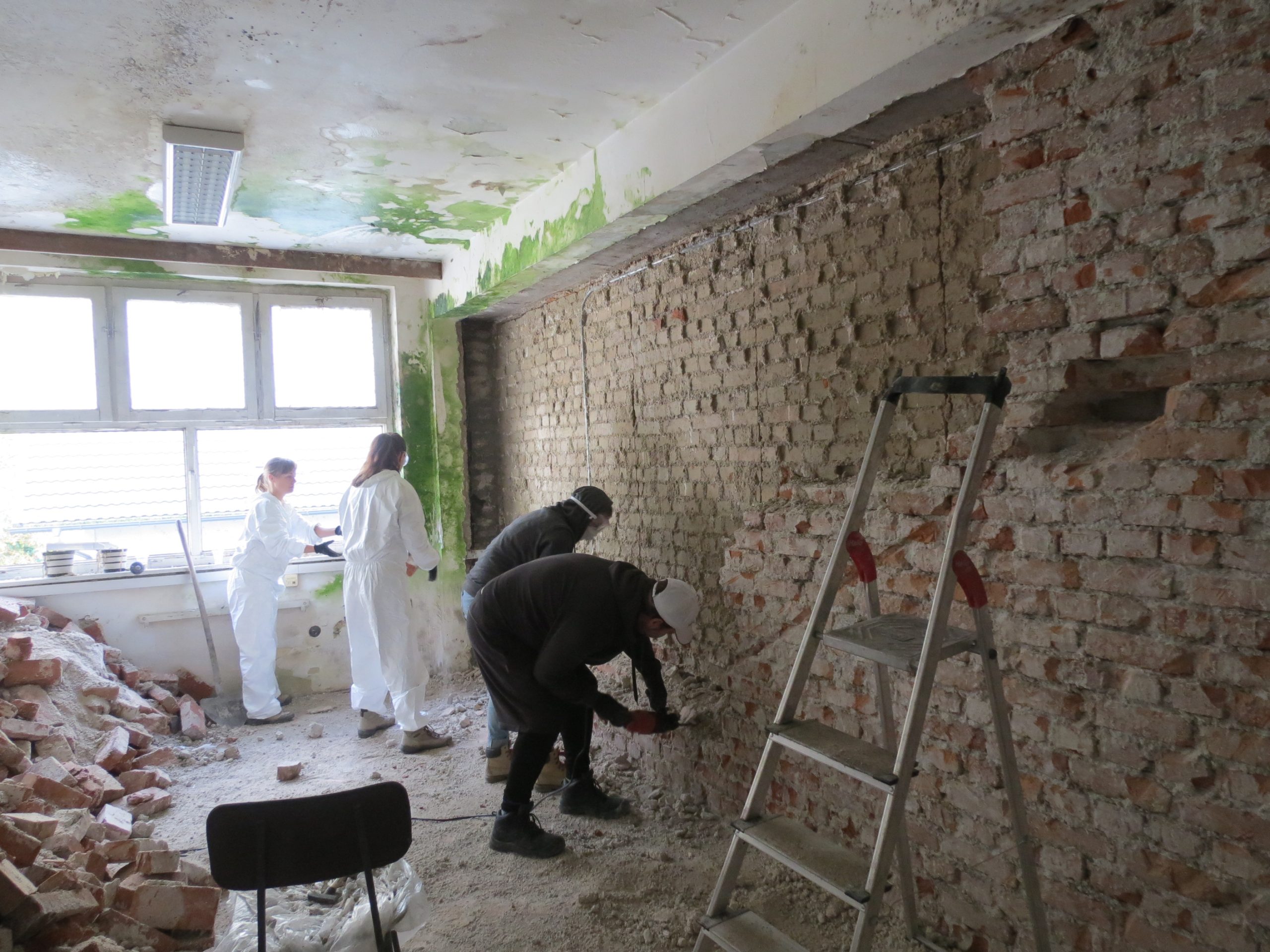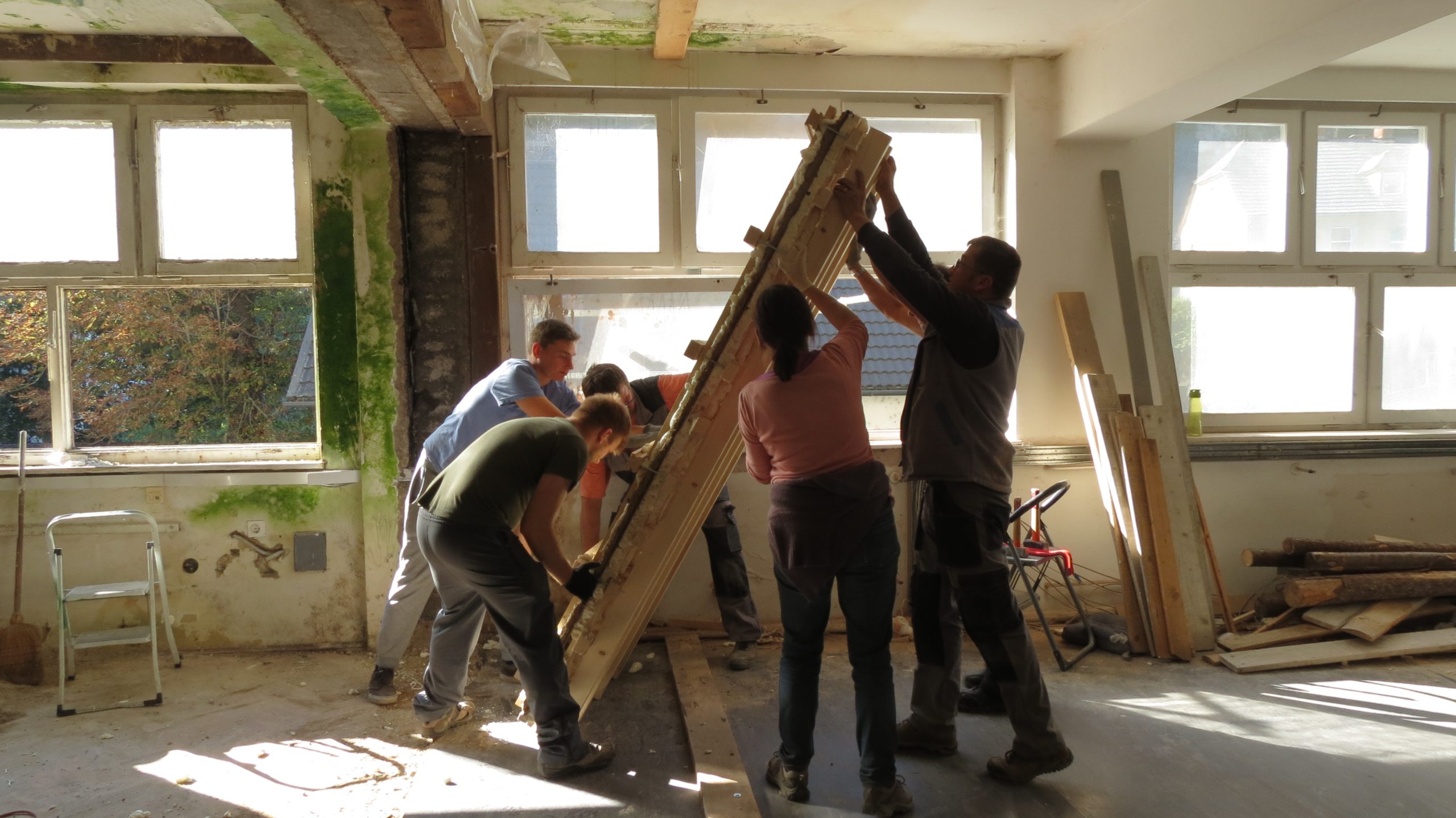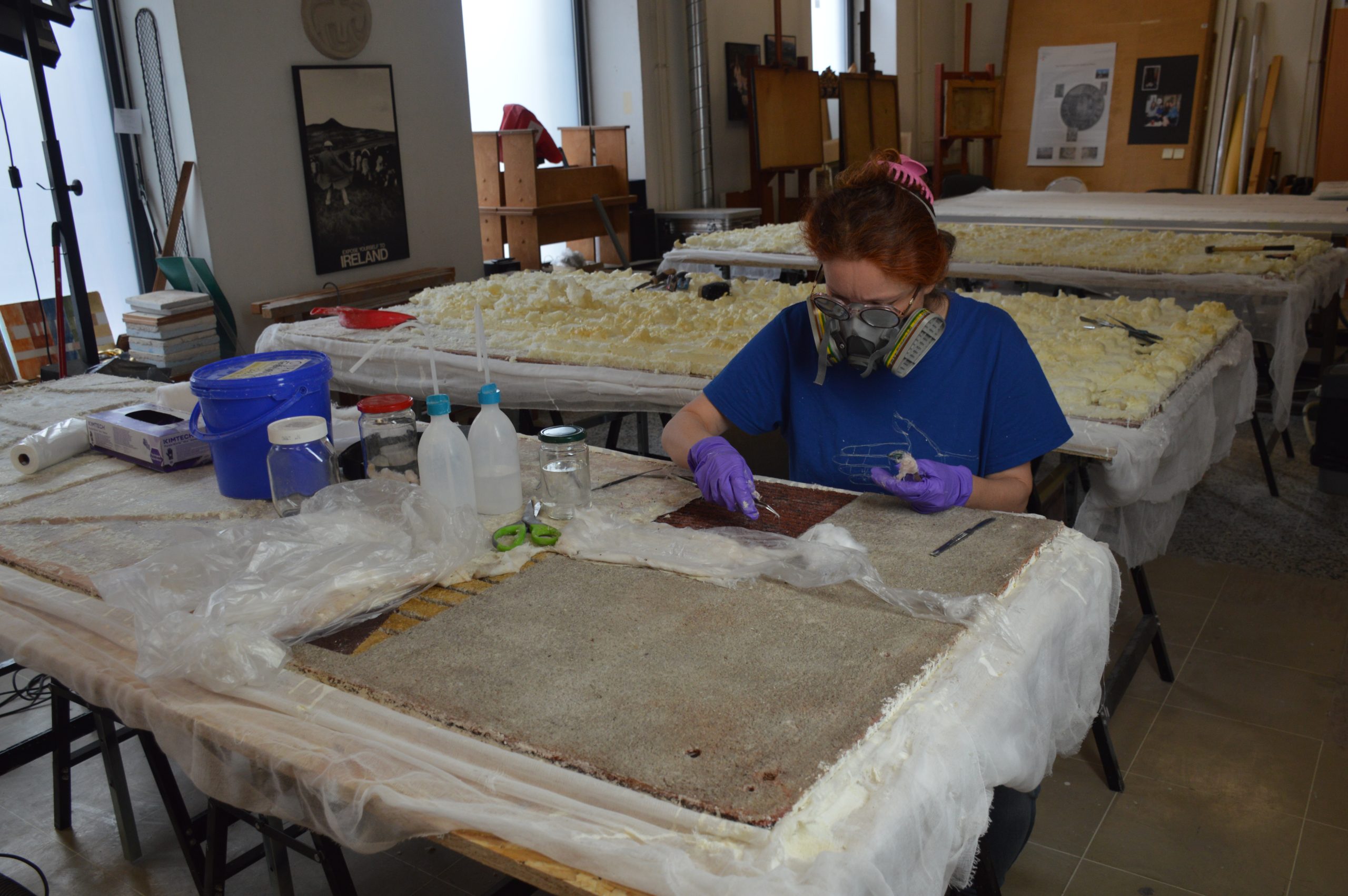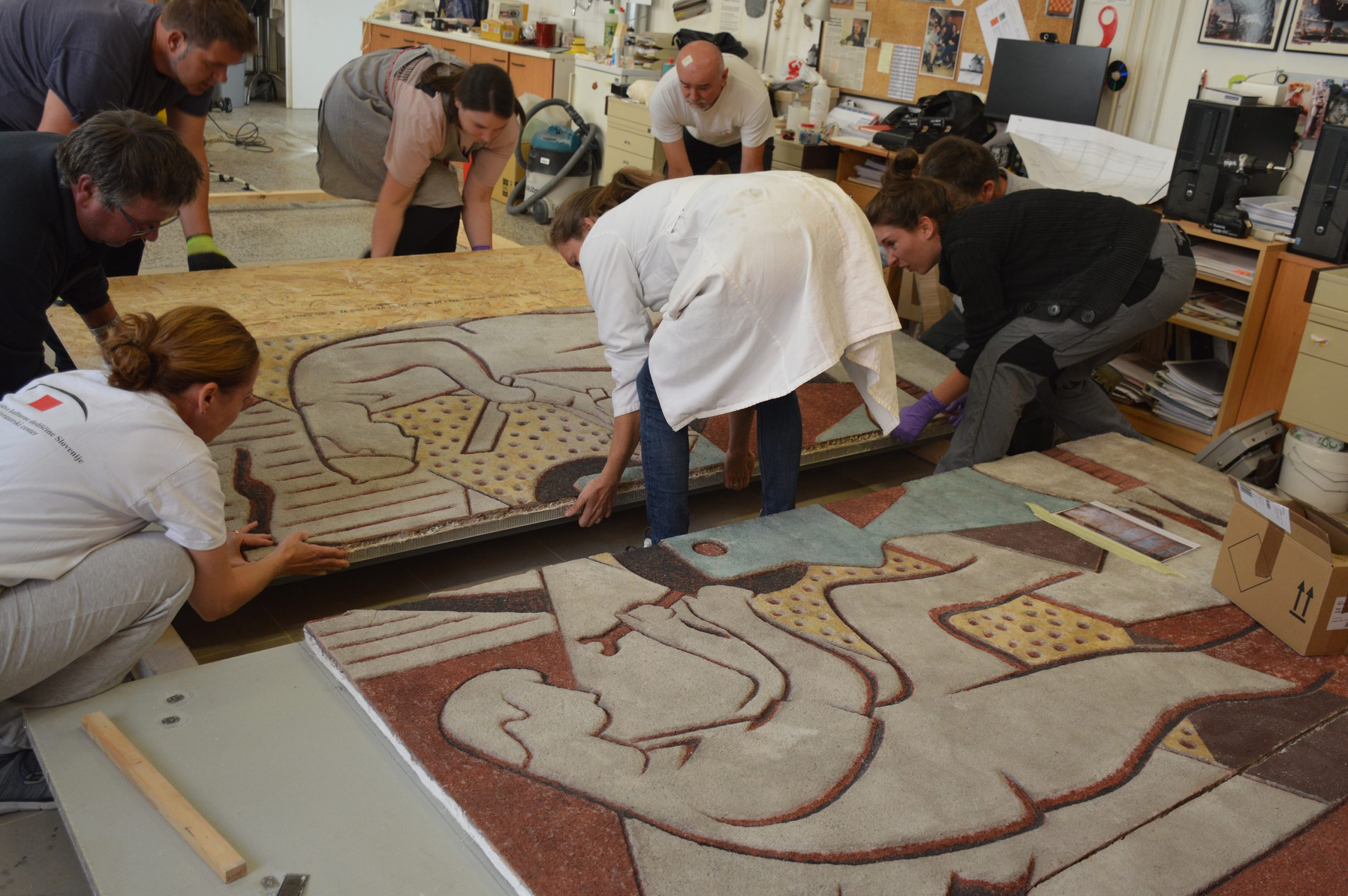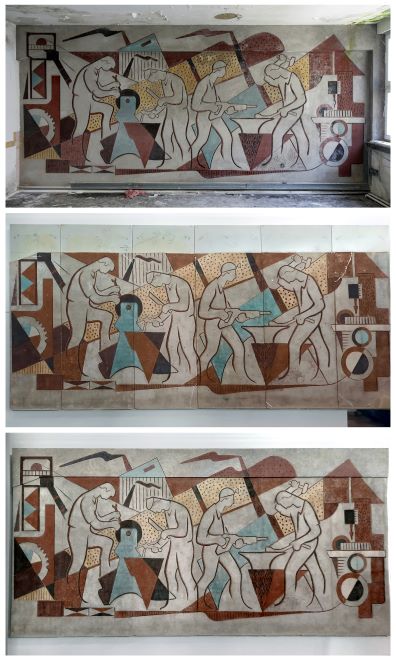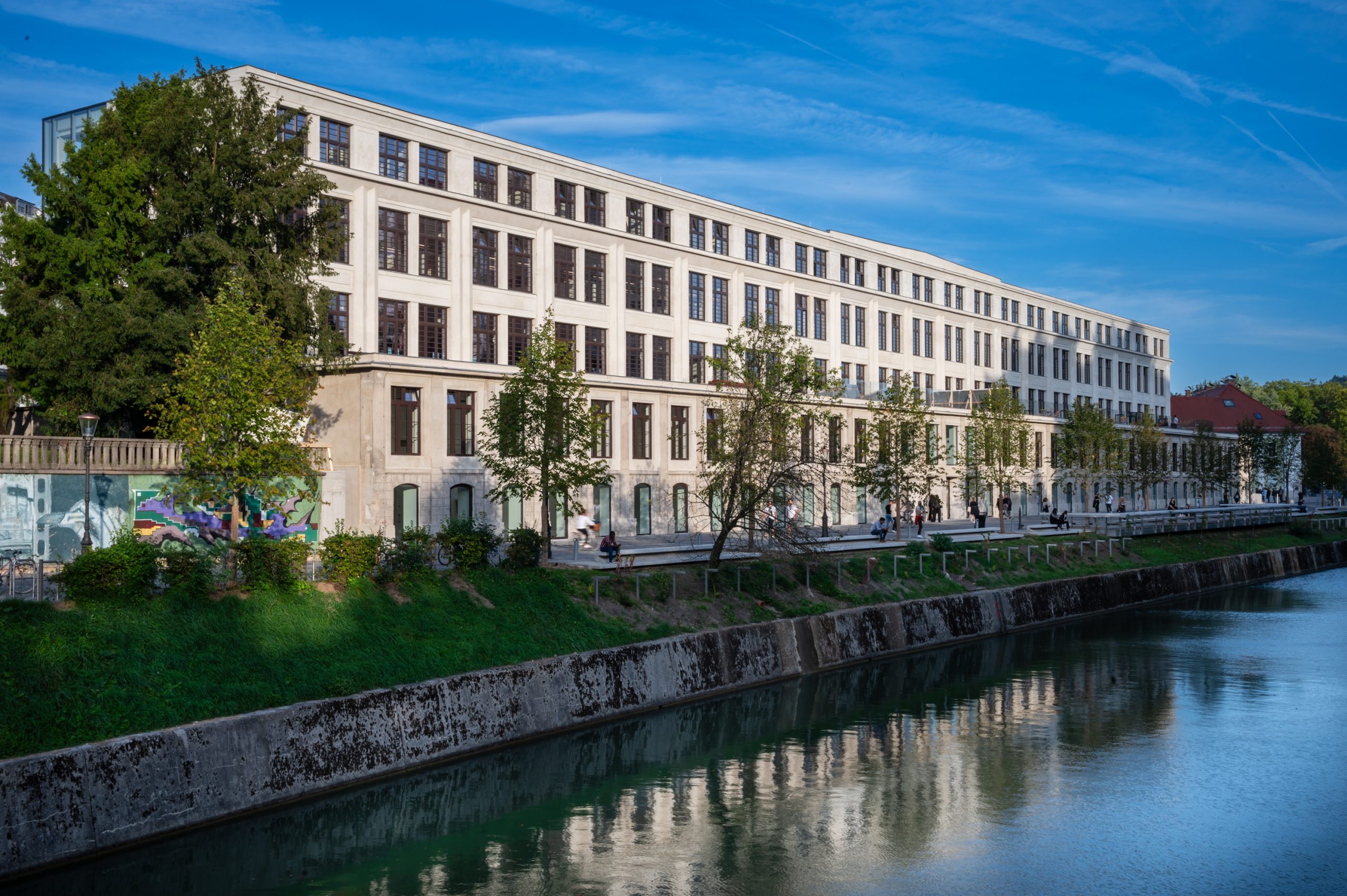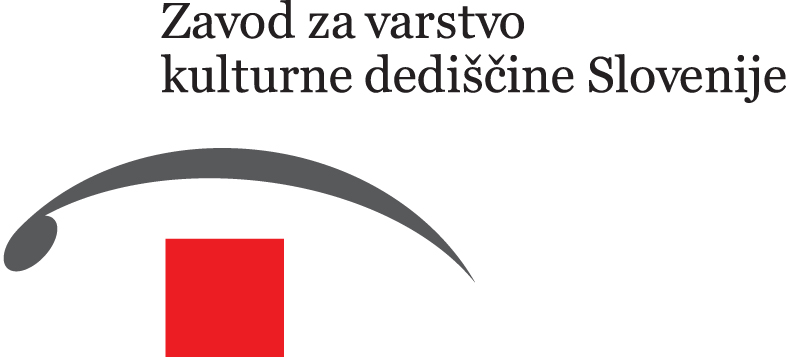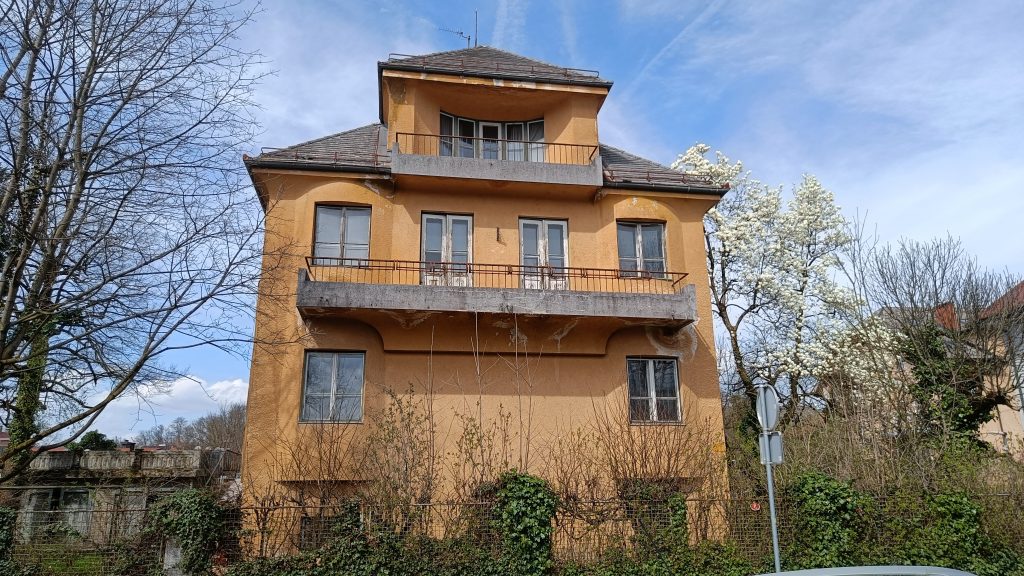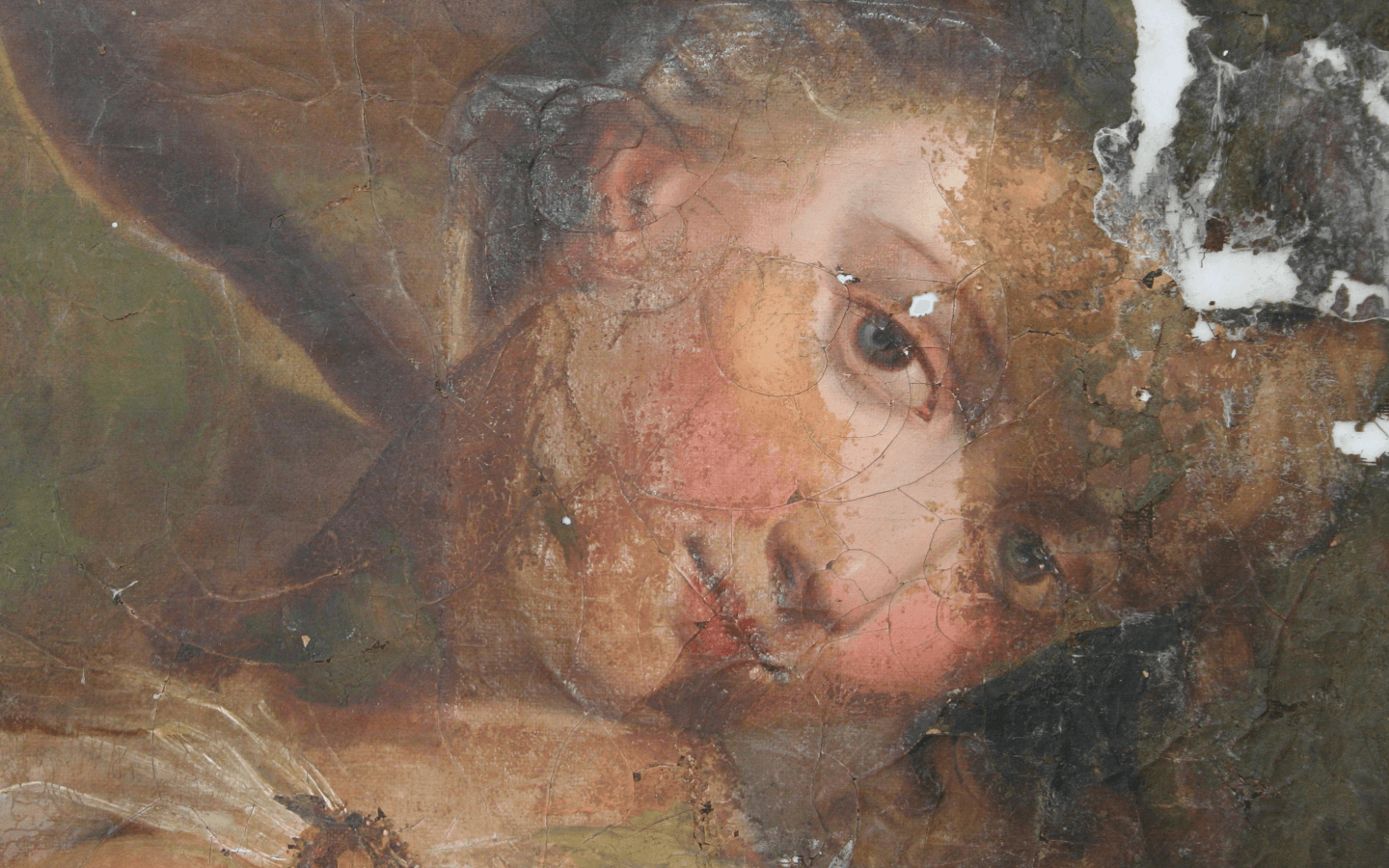In 2019, an intervention was carried out to record a 1953 print by the painter Maks Kavčič, which was threatened with destruction due to the demolition of the former Trbovlje Machine-Building Factory, and in 2022 the artwork was presented on a new support in the lobby of the Trbovlje Workers' Home.
Text by Jelka Kuret
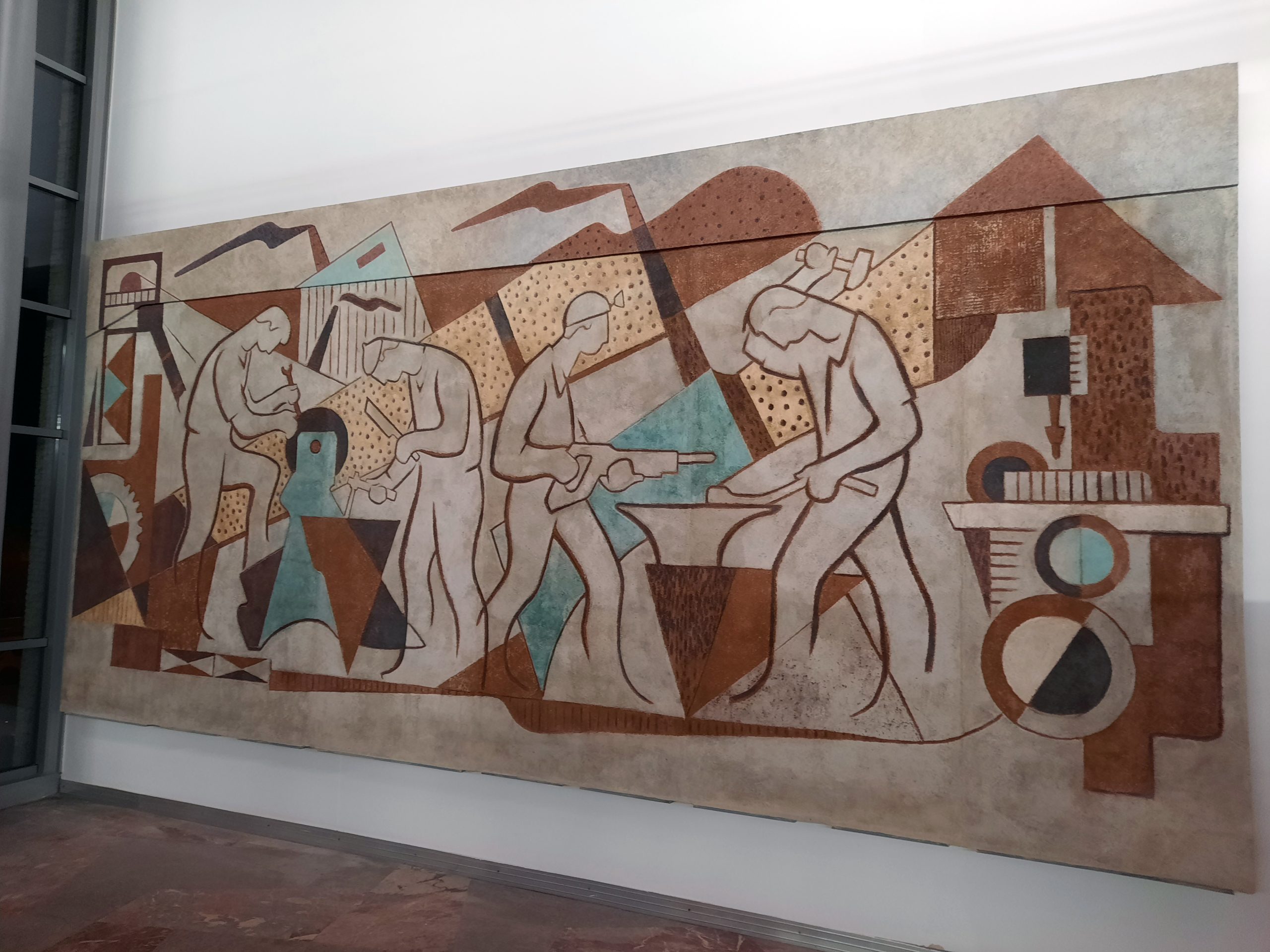
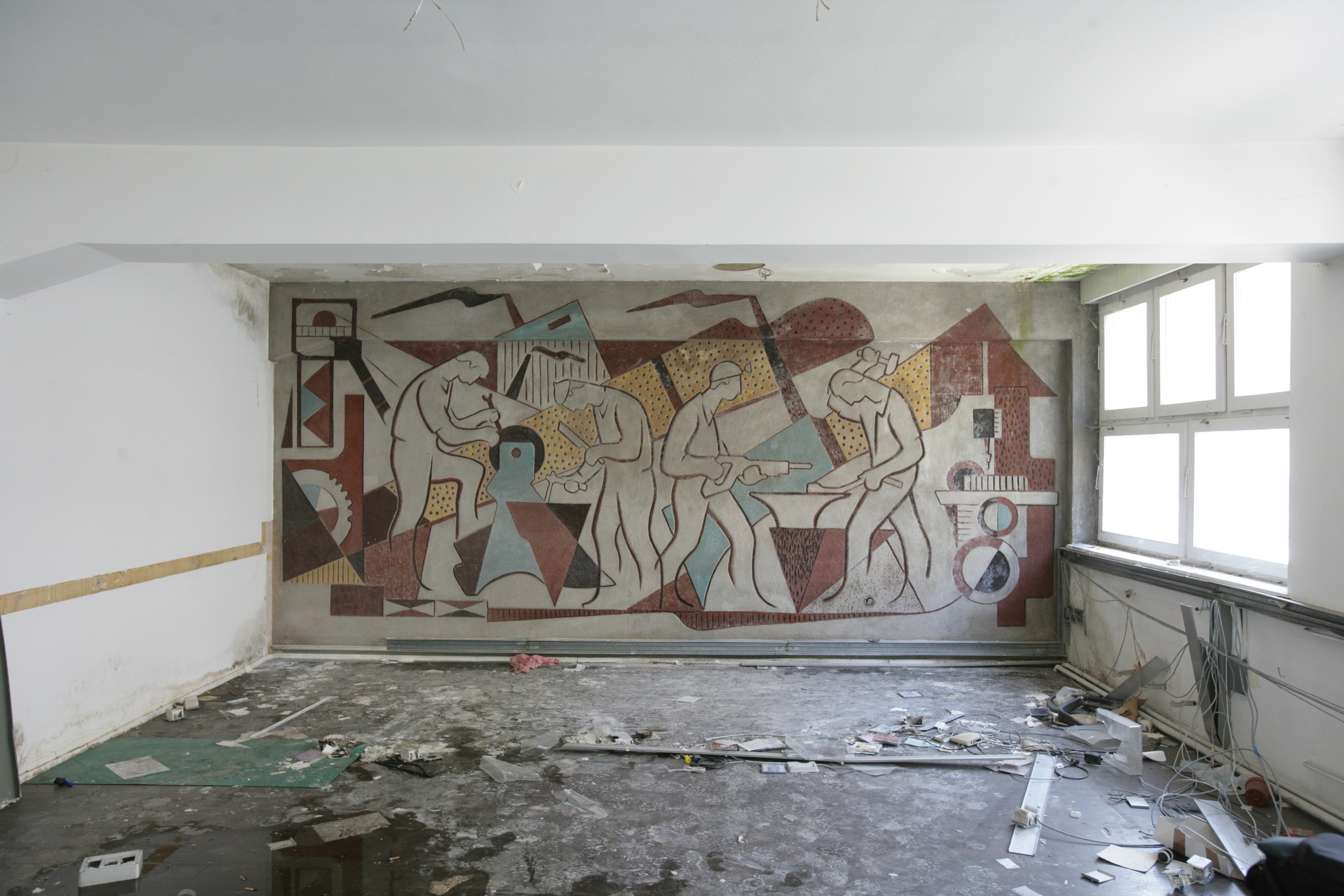
The Trbovlje Machine Works, for which a mural was commissioned from the renowned painter Maks Kavčič from Maribor, was spread over 28,000 square metres in the mid-1950s, making it the largest mining machinery factory in the Balkans. The painting is done in the graffito technique or mixed technique, as part of the plaster is painted. It represents an important part of Slovenian modernism in the visual arts; iconographically it glorifies the working class of Trbovlje and the local industrial environment of Zasavje, where it was created. It shows four workers with tools at work, surrounded by machinery and the architecture of factory buildings and chimneys in the background. The mural took up the entire wall of one of the rooms on the first floor of the administrative part of the building and, including the lintel, measured 610 x 291 cm.
Preparing for interventions
At the time of the intervention, demolition work was already underway, but was temporarily suspended in order to remove and preserve the artwork. On the basis of the experiments, the appropriate materials and methodology for consolidation and removal were determined. The graffito was cut into six parts before being removed, so as to minimise damage to the figures. However, the upper part of the mural, which was executed on a reinforced concrete lintel, could not be taken down in the time available. During the removal, the individual fragments were protected by a wooden mesh structure, which was specially adapted to each of the six fragments. After removal, the fragments were stored in wooden crates and transported to the depot of the Zasavský Museum Trbovlje.
In 2022, conservation and restoration procedures were carried out to present the artwork on a new medium. The plaster of the graphite on the back was of varying thickness, so before the armature was made, the entire back was evenly flattened and thinned, thus reducing the weight of the fragments. For each fragment, a custom-made steel structure was fabricated, to which special lightweight plates were later attached. The steel structure was indeed solid, but extremely heavy. A single panel, together with the steel structure, weighed about 170 kg, and together with the graffiti it weighed 250 kg. The high weight made the subsequent operations much more demanding and really had to be well thought out. Never before had such heavy fragments been glued together, which required an extended and physically strong team, and the work had to be coordinated, well thought out and well planned. Care had to be taken to ensure that the glue was applied thickly enough, that the joints between the fragments were of the right height, that the motif was continued correctly at the joints, etc. The puttying of the joints, retouching and reconstruction of the painting on the upper part, which was not removed in 2019 and was demolished together with the building, was carried out in the Workers' House.
The project was awarded the Mirko Šubic Prize in 2023.
